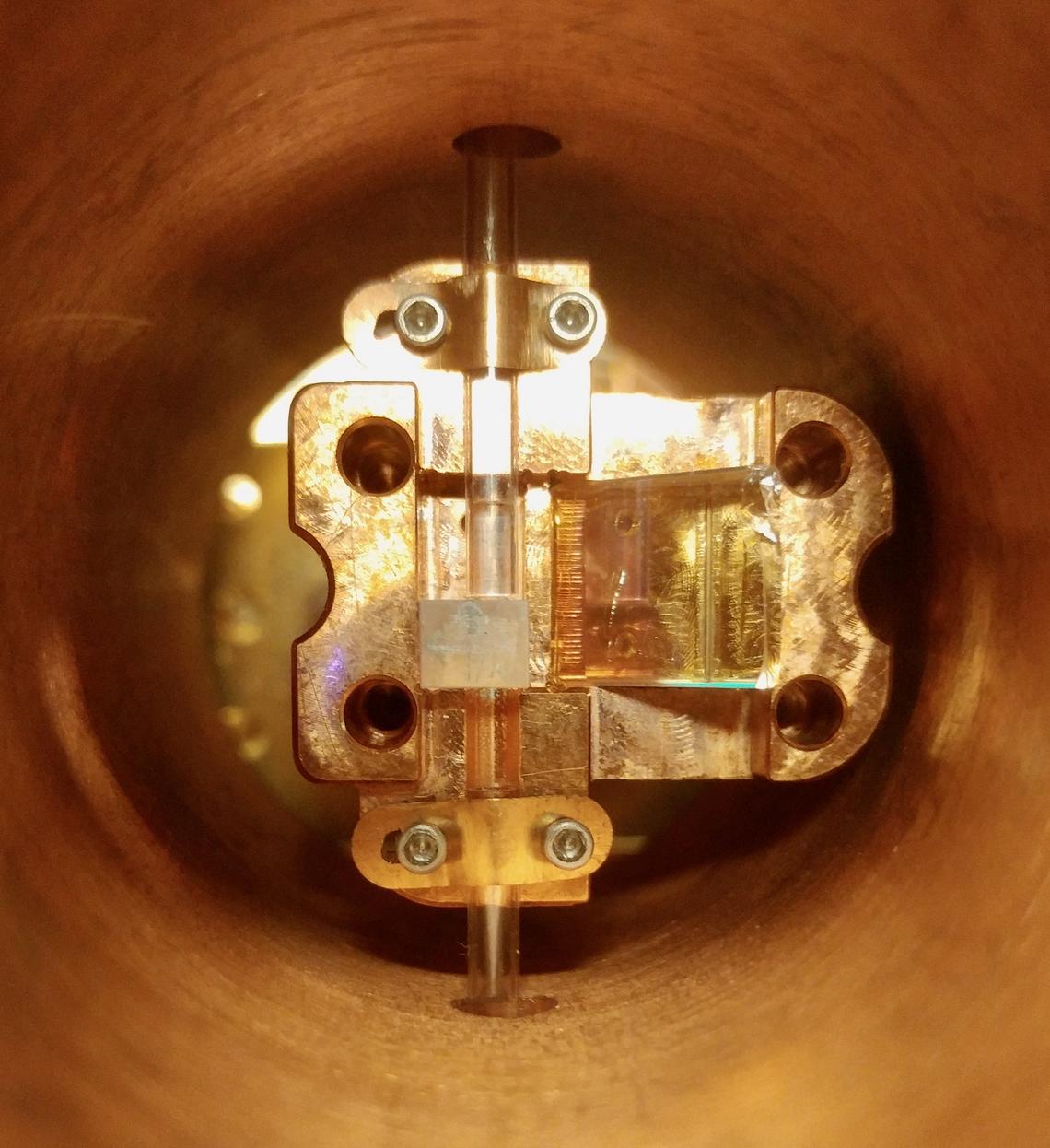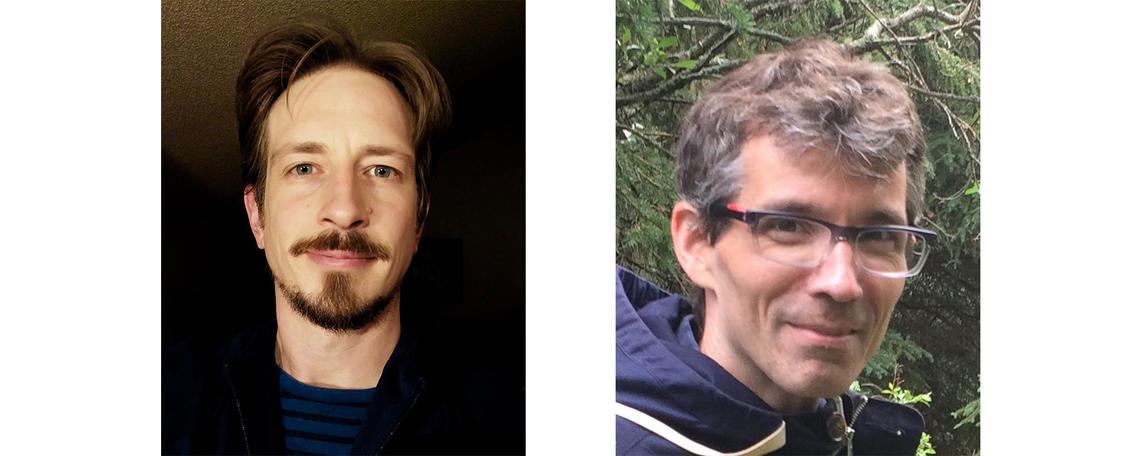Dec. 16, 2020
Scientists take important step toward building practical quantum internet

An international research team, including UCalgary quantum physicists, has taken a big step toward building a high-performing, scalable “quantum internet.”
A functional quantum internet would dramatically change the fields of secure communication, data storage, precision sensing and computing.
In such a network, information stored in quantum bits, or qubits (the basic unit of quantum information) is shared, or teleported, over long distances.
“High-fidelity” (high quality) quantum teleportation of photons (elementary particles of light) is essential for secure long-distance communications and a practical quantum internet.
“In this new study we demonstrate the quantum teleportation of photonic quantum states,” says study co-author Dr. Daniel Oblak, PhD, assistant professor of physics in the Department of Physics and Astronomy in the Faculty of Science. “This work meets the technological benchmarks required for a quantum internet system to a very high degree.”
The research team achieved sustained, long-distance teleportation, through 44 kilometres of optical fibre, of qubits of photons. The teleportation fidelity was greater than 90 per cent, using off-the-shelf equipment and state-of-the-art single photon detectors.
- Photo above: The new study used state-of-the-art single-photon detectors to measure photons (elementary particles of light). This photo shows the UCalgary’s superconducting nano-wire single-photon detectors, which were co-developed by the National Institute of Standards and Technology (NIST) and NASA’s Jet Propulsion Laboratory. These are nearly identical to those used in the current study. Photo courtesy Daniel Oblak
“This is an advancement towards a more readily available scaling up of such systems in different locations, to build a bigger system,” says study co-author Dr. Christoph Simon, PhD, professor of physics in the Department of Physics and Astronomy.
The measurements were performed on the California Institute of Technology’s and the Fermilab Quantum Network’s teleportation system test beds, part of Caltech’s multidisciplinary, multi-institutional public-private research program on Intelligent Quantum Networks and Technologies.
The team’s experimental results are supported by an analytical model that accurately accounts for realistic imperfections in the experiment. Study co-author Dr. Nikolai Lauk, PhD, a former postdoctoral researcher with Simon who is now a postdoc at Caltech, developed this model.
The team includes researchers from Caltech, Fermilab, NASA Jet Propulsion Laboratory, University of Calgary, and Harvard University.
Their study, “Teleportation Systems Toward a Quantum Internet,” is published in PRX Quantum, a physical review journal.

University of Calgary physicists are developing components for a quantum network, including quantum memory which can store quantum information. This photo shows innermost part of a quantum memory experimental setup from a UCalgary laboratory.
Daniel Oblak
UCalgary seen as 'go-to partner' for quantum network R&D
For the study, Oblak visited the Caltech lab in Pasadena, Calif. and the Fermilab near Chicago to do hands-on work, and also advised on implementing parts of the experiment.
Simon, who’s involved in a larger collaboration with Dr. Maria Spiropulu, PhD, an experimental physicist at Caltech, on making the quantum internet more broadly, served as an adviser on the study.
Building a functional quantum internet is so complex it will require a new model for quantum collaboration, the kind of “big science” typical of high-energy physics and astrophysics, Simon and Spiropulu wrote in an article for the American Physical Society News. This includes consortia “with expertise spanning classical and quantum [physics], public and private [sectors], hardware and software, science and society.”
“We will be a key partner in such consortia based on our past experience, but also some of our up-and-coming experiments and research,” Simon says.
For example, the new study builds on a 2016 experiment Oblak participated in, when UCalgary and international researchers successfully teleported a photon through six kilometres of The City of Calgary’s fibre optic cable infrastructure.
That experiment was led by then-UCalgary physics professor Dr. Wolfgang Tittel, PhD, (now at Delft University of Technology in the Netherlands). It included UCalgary graduate Dr. Raju Valivarthi, PhD, who became a Caltech postdoctoral scholar and is the lead author on the new paper.
Also, Harvard University’s partner on the new study, Dr. Neil Sinclair, PhD, did his doctoral degree with Tittel at UCalgary.
“Our track record has made us the go-to partner for other collaborators who want to build quantum networks,” says Oblak. “We are an internationally significant centre in this work.”
That work includes projects to develop other components required for a quantum internet, such as quantum memories (which can store quantum information) and quantum transducers (which can "translate" quantum information between quantum computers and photons).

Dr. Daniel Oblak (left) and Dr. Christoph Simon
UCalgary’s quantum science is led by Dr. Barry Sanders, PhD, professor of physics in the Department of Physics and Astronomy, director of the Institute for Quantum Science and Technology, and lead investigator of the Alberta Major Innovation Fund Project on Quantum Technologies. The work focuses on three main areas: quantum sensing, quantum computing and quantum communication (which Simon leads).
Oblak leads UCalgary’s participation in the science team for the Quantum Encryption and Science Satellite project, led by the University of Waterloo. The project involves quantum key distribution to establish highly secure cryptographic keys, by transmitting each bit of the key between distant locations via links with satellites.
“We’re soon going to have a quantum satellite ground station with the capability of connecting to quantum satellites,” Oblak says.
UCalgary’s work on quantum internet components and the quantum satellite ground station is funded by the Alberta government’s Major Innovation Fund and by federal research funding programs.





